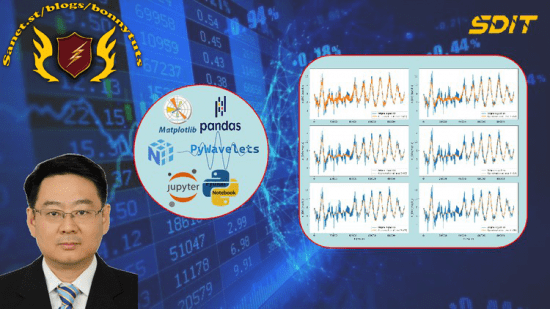
MP4 | Video: h264, 1280×720 | Audio: AAC, 44.1 KHz, 2 Ch
Genre: eLearning | Language: English + srt | Duration: 34 lectures (6h 16m) | Size: 5.07 GB
Real-World Projects with PyWavelets, Jupyter notebook, Numpy, Pandas, Matplotlib and Many More
What you’ll learn
Filter Bank and its Visualization of Discrete Wavelet Transforms
Signal Extension Modes in PyWavelets
Concepts and processes of sigle and multi-level 1D Discrete Wavelet Transforms
Single level Discrete Wavelet decompostion and reconstruction of 1D times series signal
Multilevel 1D Discrete Wavelet Decompostion of 1D times series signal
Visualiztion of Wavelet Transform Coefficents
Approximation and details reconstruction
Visualization of approximation and details
Noise reduction from the data and visulization of the results
Requirements
Basic Python programming experience needed
You should finish the free lectures of Section 3 in the “Practical Python Wavelet Transform (I): Fundamentals”, which are prerequisites for you to setup Python Wavelet Transform Environment..
Basic knowledge on Jupyter notebook, Python data analysis and visualiztion are advantages, but are not required
Description
The Wavelet Transforms (WT) or wavelet analysis is probably the most recent solution to overcome the shortcomings of the Fourier Transform (FT). WT transforms a signal in period (or frequency) without losing time resolution. In the signal processing context, WT provides a method to decompose an input signal of interest into a set of elementary waveforms, i.e. “wavelets”., and then analyze the signal by examining the coefficients (or weights) of these wavelets.
Wavelets transform can be used for stationary and nonstationary signals, including but not limited to the following
noise removal from the signals
trend analysis and forecationg
detection of abrupt discontinuities, change, or abnormal behavior, etc. and
compression of large amounts of data
the new image compression standard called JPEG2000 is fully based on wavelets
data encryption,i.e. secure the data
Combine it with machine learning to improve the modelling accuracy
Therefore, it would be great for your future development if you could learn this great tool. Practiclal Python Wavelet Transforms includes a series of courses, in which one can learn Wavelet Transforms using word-real cases. The topics of this course series includes the following topics
Part (I): Fundmentals
Part (II): 1D Discrete Wavelet Transform (DWT)
Sationary Wavelet Transform (SWT)
Multiresolutiom Analysis (MRA)
Wavelet Packet Transform (WPT)
Maximum Overlap Discrete Wavelet Transform (MODWT)
Multiresolutiom Analysis based on MODWT (MODWTMRA)
This course is the second part of this course series. In this course, you will learn the concepts and processes of sigle-level and multi-level 1D Discrete Wavelet Transforms through simple easy understand digrams and examples and two concrete world-real cases and exercises. After this course, you will be able to decompose a 1D time series signal into approximation and details coefficients, reconstruct and partial reconstruct the signal, make noise reduction from the data signal, and visualize the results using beatiful figures.
Who this course is for
Data Analysist, Engineers and Scientists
Signal Processing Engineers and Professionals
Machine Learning Engineers, Scientists and Professionals who are seeking advance algrothms
Acedemic faculties and students who study signal processing, data analysis and machine learning
Anyone who likes signal processing, data analysis,and advance algrothms for machine learning
Password/解压密码www.tbtos.com
转载请注明:0daytown » Practical Python Wavelet Transforms (II): 1D DWT